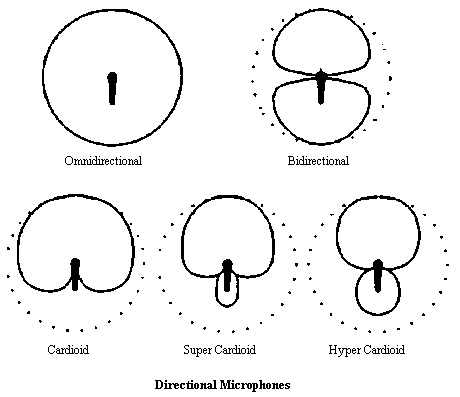A circular, two-dimensional plot that indicates the directional response of a transducer, such as a directional microphone. Whole polar patterns are commonly used to show microphone responsepick-up patterns,; they also can indicate the dispersion of a speaker. In the diagram below, points X and Y indicate response nulls in the hypercardioid microphone, which represent optimal angles for the placement of stage monitors. A good microphone should have a similar polar pattern from 200Hz to 10kHz, otherwise the mic will produce noticeable off-axis coloration. Also called a polar diagram or response pattern. The cardioid pattern microphone is most sensitive to sounds coming directly from the front and least sensitive to sounds coming directly from the rear. The hypercardioid is most sensitive to sounds coming directly from the front and least sensitive to sounds coming in the direction of X and Y, a good place for stage monitors.
